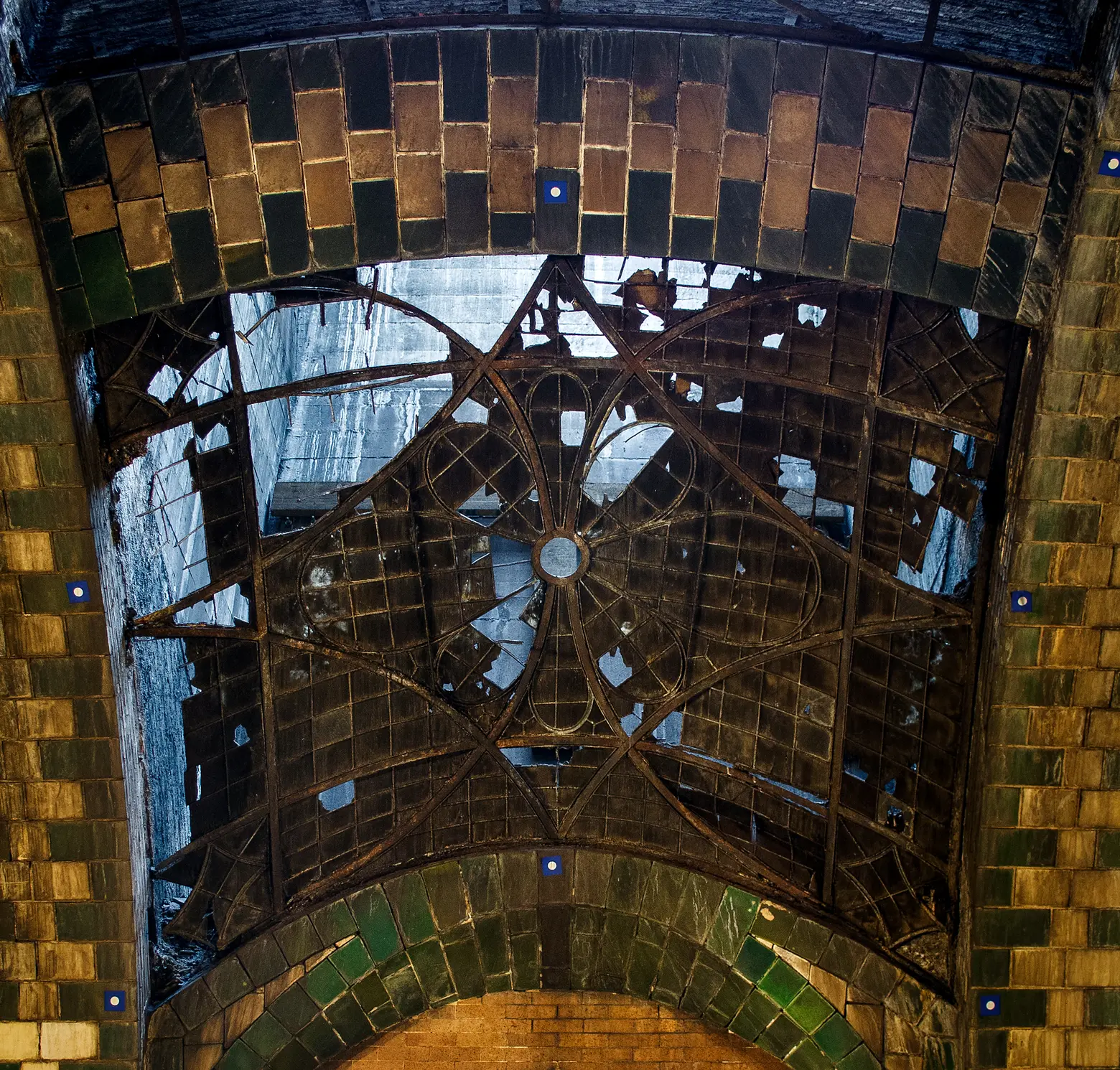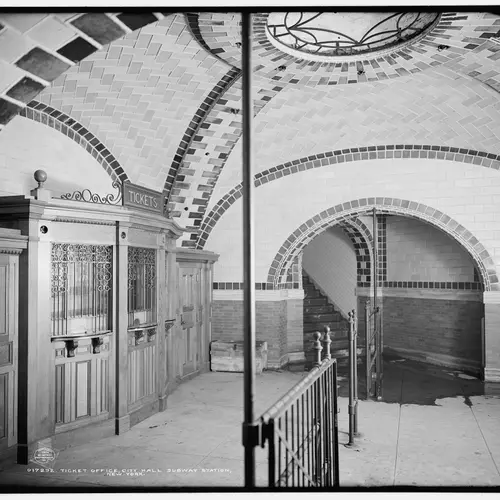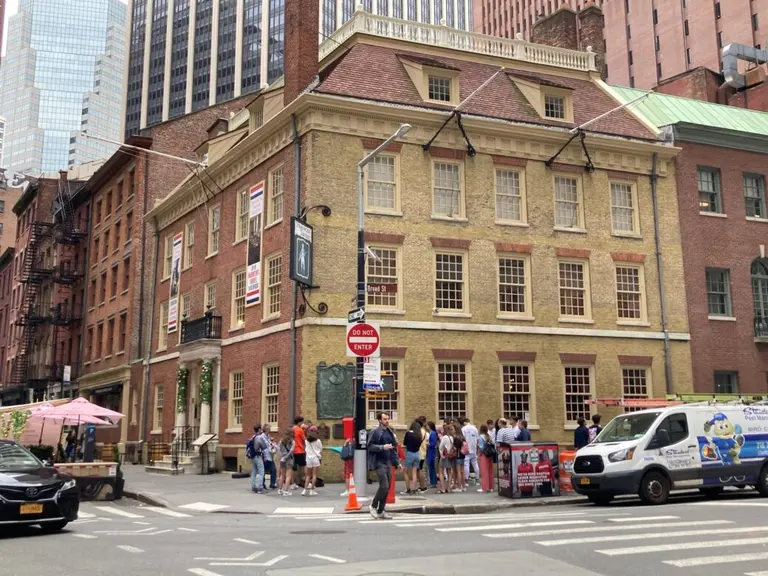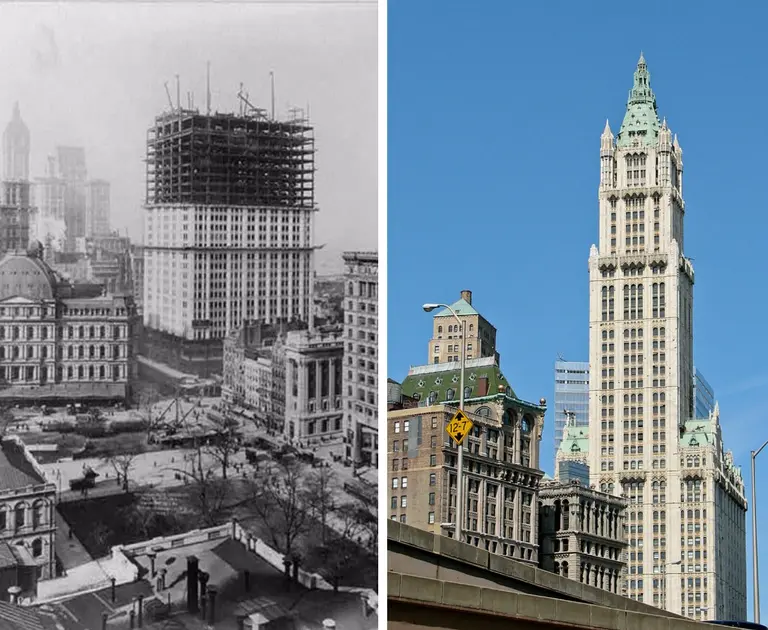Inside the stunning, abandoned City Hall subway station

Photo © James and Karla Murray
When the New York City subway opened on October 27th, 1904, it was the magnificent City Hall station that served as the backdrop for the festivities, with its arched Guastavino-tiled ceiling and skylights. But by 1945, the newer, longer subway cars could no longer fit on the station’s curved tracks, so it was closed. Today, the New York City Transit Museum occasionally offers tours of the abandoned station, which is how photographers James and Karla Murray were able to capture these beautiful photos. Ahead, see more of the station and learn all about its history.
 Detroit Publishing Co., Copyright Claimant, and Publisher Detroit Publishing Co. Ticket office, City Hall subway station, New York. Photograph. Retrieved from the Library of Congress.
Detroit Publishing Co., Copyright Claimant, and Publisher Detroit Publishing Co. Ticket office, City Hall subway station, New York. Photograph. Retrieved from the Library of Congress.
When subways first came to New York City, they were operated by private companies. The first line that opened in 1904, the IRT (Interborough Rapid Transit Subway), ran from City Hall to 145th Street, with 28 stations and the slogan “City Hall to Harlem in 15 minutes.” And because these train lines were privatized, it was important to stand out and impress New Yorkers, which is why the City Hall station was designed as a showpiece (it’s also why so many early stations have ornate mosaics). The company also wanted to show how it could stand up to those stations in London, Paris, and Rome, as this was the country’s first.
 The Miriam and Ira D. Wallach Division of Art, Prints and Photographs: Picture Collection, The New York Public Library. “City Hall Loop Station, New York” The New York Public Library Digital Collections. 1904.
The Miriam and Ira D. Wallach Division of Art, Prints and Photographs: Picture Collection, The New York Public Library. “City Hall Loop Station, New York” The New York Public Library Digital Collections. 1904.
The first train left the station at 2:35 pm with Mayor McClellan controlling the train all the way up to 103rd Street. That day, so many New Yorkers wanted to ride the new subway that 200 policemen were stationed around City Hall to manage the crowd of nearly 7,000.

 Photos © James and Karla Murray
Photos © James and Karla Murray
The City Hall station was designed by the architects Heins & LaFarge, notable for their work at the Cathedral of St. John the Divine. Christopher Grant LaFarge was the son of artist John LaFarge, famous for his stained-glass work. At City Hall, they incorporated Spanish architect and builder Rafael Guastavino’s famous vaulted, tiled ceilings, which can also be seen at the Grand Central Oyster Bar, St. John the Divine, and outside the nearby Municipal Building. As 6sqft previously explained, “the expertly engineered and architecturally beautiful vaults were lightweight, fireproof, load-bearing, cost-efficient, and able to span large interior areas.” Other architectural elements included brass chandeliers, cut amethyst glass skylights, and a bronze plaque commemorating the first subway ride that was made by sculptor Gutzon Borglum (famous for creating the presidential busts at Mount Rushmore).
 A schematic showing the City Hall station, via Internet Book Archives/Wikimedia Commons
A schematic showing the City Hall station, via Internet Book Archives/Wikimedia Commons
The curving tracks of the station could only accommodate the original five-car subways, but by the ’40s, they had been lengthened to 10 cars. Also, as the New York Times recounted at the time, “The station, 600 feet from the Brooklyn Bridge station, handles only about 800 fares a day.” For these reasons, it was closed on December 31, 1945. Closing the station also allowed the city to improve City Hall Park above, as it permitted the removal of two kiosks in the park.
 Photo © James and Karla Murray
Photo © James and Karla Murray
Today, the ticket booths and wooden benches are gone, and many of the skylights are broken or still retain the tar that was used to black them out during WWII. But seeing the City Hall subway station is still a reminder of the grandeur that once existed.

In addition to the Transit Museum’s tours (which are open to members only and “cost $50 per person and sell out very quickly”), you can catch a glimpse of the subway station if you stay on the downtown 6 train after it leaves the Brooklyn Bridge station, as it will loop through the City Hall station to head back uptown.
You can see more of the beautiful City Hall subway station in the video below by James and Karla Murray, as well as learn about the Chambers Street J/Z station, which is, on the contrary, often considered the ugliest station in the city.
RELATED:
- What it was like the day the NYC subway opened in 1904
- Palaces for the People: Where to See the Timeless Tiled Works of Guastavino in NYC
- Inside the graffiti-covered 191st Street tunnel, NYC’s deepest subway and only underground ‘street’
Photos © James and Karla Murray





































